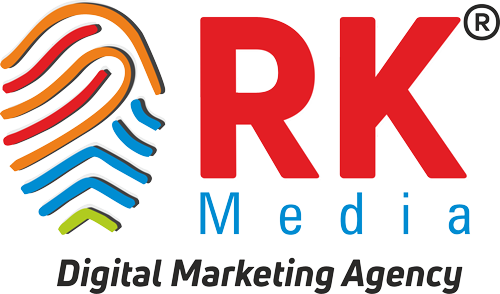Enhancing Banking Through Social Media: Addressing Pain Points and Leveraging Digital Marketing
Introduction
The contemporary landscape of the banking industry is undergoing a paradigm shift, with an increasing emphasis on leveraging the power of social media to enhance various facets of banking services. This paper explores the synergy between banking and social media, aiming to shed light on how this integration can address existing challenges and capitalize on digital marketing strategies. As financial institutions continue to navigate the digital era, understanding the implications and opportunities presented by banking through social media becomes imperative for sustained growth and customer satisfaction.
Brief overview of the banking industry’s increasing reliance on social media
In recent years, the banking industry has witnessed a substantial transformation in its approach to customer engagement and marketing strategies, with a notable shift towards social media platforms. The prevalence of social media channels such as Facebook, Twitter, Instagram, and LinkedIn has provided banks with unprecedented opportunities to connect with their customers on a more personal level. This shift is not only reflective of changing consumer preferences but also an acknowledgment of the need for a robust online presence.
Banks are now utilizing social media not only for marketing purposes but also as a means of providing real-time customer support, disseminating financial education, and gathering valuable insights into customer behavior. The multifaceted nature of social media allows financial institutions to create targeted campaigns, interact with their audience, and establish a more humanized brand image. This section explores the evolving role of social media in banking, examining how these platforms have become integral to customer communication, brand building, and market positioning.
Importance of addressing pain points in banking through digital marketing
In the pursuit of enhancing banking through social media, it is crucial to recognize and address the pain points that customers commonly experience in their interactions with financial institutions. Digital marketing emerges as a powerful tool in this endeavor, offering a tailored approach to addressing customer concerns, streamlining processes, and improving overall user experience.
Digital marketing enables banks to proactively engage with customers, identify pain points through analytics, and develop targeted solutions. By leveraging data-driven insights, banks can anticipate and address customer needs, resulting in enhanced customer satisfaction and loyalty. This section delves into the pivotal role of digital marketing in mitigating pain points, illustrating how a strategic and customer-centric approach can foster a more seamless and satisfying banking experience through social media.
Role of a Digital Marketing Agency
In the realm of Banking Through Social Media, the role of a Digital Marketing Agency is pivotal in bridging the gap between traditional banking practices and the evolving digital landscape. These agencies serve as strategic partners for financial institutions, leveraging their expertise to navigate the complex world of social media. From crafting targeted campaigns to managing online reputation, a digital marketing agency plays a crucial role in establishing and maintaining a bank’s presence on various social platforms.
Content Strategy
A robust content strategy is fundamental to successful “Banking Through Social Media.” It involves the creation, distribution, and management of content to attract and engage the target audience. The key elements of an effective content strategy in this context include:
- Educational Content: Providing informative content that addresses the financial literacy needs of the audience. This could include articles, infographics, and videos explaining banking products, investment strategies, and financial planning.
- Customer Stories and Testimonials: Sharing success stories and positive customer experiences through social media builds trust and credibility. Real-life examples of how banking through social media has benefited customers can be a powerful tool.
- Promotion of Digital Services: Highlighting the convenience and benefits of digital banking services. This could involve showcasing features like mobile banking apps, online account management, and contactless payment options.
- Thought Leadership: Establishing the bank as an authority in the financial industry by sharing insights, market trends, and expert opinions. This positions the institution as a go-to source for reliable financial information.
Creating engaging and informative content
Creating content that captures the audience’s attention and provides value is essential in Banking Through Social Media. This involves:
- Understanding the Audience: Conducting thorough research to understand the demographics, preferences, and behaviors of the target audience. Tailoring content to address their pain points and interests enhances engagement.
- Visual Appeal: Incorporating visually appealing elements such as high-quality images, graphics, and videos to make the content more shareable and memorable.
- Interactive Content: Encouraging audience interaction through polls, quizzes, and surveys. This not only increases engagement but also provides valuable data about customer preferences.
- Timely and Relevant Content: Staying current with industry trends and addressing timely issues ensures that the content remains relevant and resonates with the audience.
Tailoring content to different social media platforms
Each social media platform has its unique characteristics and audience demographics. Tailoring content to suit these platforms is critical in “Banking Through Social Media”:
- Platform-Specific Content: Adapting the content format to match the preferences of each platform. For example, using visually rich content on Instagram, concise and engaging posts on Twitter, and longer-form educational content on platforms like LinkedIn.
- Optimizing for Mobile: Recognizing the mobile-centric nature of social media usage and ensuring that content is optimized for a seamless mobile experience. This includes using mobile-friendly visuals and concise, scannable text.
- Hashtag Strategies: Employing relevant and trending hashtags to increase the discoverability of content. This enhances the reach of banking-related content and connects with a broader online audience.
- Community Engagement: Actively participating in discussions, responding to comments, and fostering a sense of community on each platform. Building a strong online community enhances brand loyalty and trust in banking services delivered through social media.
Reputation Monitoring and Management
In the context of Enhancing Banking Through Social Media, reputation monitoring and management refer to the systematic oversight of a bank’s online image and public perception across various social media platforms. This involves actively tracking mentions, comments, and reviews related to the bank on platforms such as Facebook, Twitter, LinkedIn, and Instagram.
- Social Media Listening: Utilize advanced social listening tools to keep track of conversations about the bank. This involves monitoring not only direct mentions but also relevant keywords associated with the banking industry.
- Sentiment Analysis: Implement sentiment analysis tools to evaluate the tone of online mentions. This helps in gauging whether the sentiment is positive, negative, or neutral, allowing the bank to respond accordingly.
- Customer Feedback Handling: Develop a streamlined process for handling customer feedback received through social media. Timely and constructive responses can help in resolving issues and building a positive online reputation.
- Engagement Strategies: Actively engage with customers on social media, addressing queries and concerns promptly. This not only demonstrates responsiveness but also contributes to a positive online presence.
Implementing tools for real-time monitoring
To enhance banking through social media, real-time monitoring tools are essential for staying abreast of customer sentiments, industry trends, and potential issues. Real-time monitoring allows banks to respond promptly to emerging situations, reinforcing customer satisfaction and trust. Key Tools and Techniques:
- Social Media Management Platforms: Invest in robust social media management platforms that offer real-time monitoring features. These tools consolidate social media activities and enable efficient tracking.
- Alert Systems: Set up alert systems to receive instant notifications about critical mentions, sudden spikes in activity, or the emergence of specific keywords. This proactive approach enables the bank to address issues swiftly.
- Analytics Dashboards: Utilize analytics dashboards to gain insights into social media performance. This includes metrics such as engagement rates, follower growth, and sentiment trends, aiding in informed decision-making.
Developing strategies to address negative sentiment
Negative sentiment can significantly impact a bank’s reputation on social media. Therefore, developing effective strategies to address and mitigate negative sentiment is crucial for enhancing banking through social media.
- Proactive Communication: Implement proactive communication strategies to address potential issues before they escalate. This may involve transparently communicating changes, updates, or addressing common concerns preemptively.
- Issue Resolution Protocols: Establish clear protocols for addressing customer complaints or negative feedback on social media. Ensure that customer service teams are equipped to respond professionally and effectively to resolve issues.
- Positive Content Promotion: Counteract negative sentiment by actively promoting positive content. This can include showcasing success stories, community involvement, and other initiatives that highlight the bank’s positive contributions.
- Feedback Incorporation: Demonstrate a commitment to improvement by incorporating constructive feedback into the bank’s practices. Communicate changes based on customer input, showcasing a responsive and customer-centric approach.
Compliance Solutions
In the realm of Banking Through Social Media, compliance solutions are paramount to ensure that financial institutions adhere to the legal and regulatory frameworks governing the banking industry. This involves the development and implementation of robust compliance strategies tailored specifically for social media platforms. Banks need to integrate mechanisms that not only monitor their activities on these platforms but also guarantee adherence to local and international regulations.
To enhance banking through social media, compliance solutions must encompass tools and technologies that can detect and prevent potential breaches, ensuring the security of customer data and financial transactions. This may involve employing advanced encryption methods, multi-factor authentication, and secure communication channels to protect sensitive information shared via social media.
Staying abreast of industry regulations
emaining current with industry regulations is crucial for financial institutions engaged in banking through social media. Banking laws and regulations are dynamic, and they often undergo frequent changes to address emerging challenges and technologies. To address pain points and leverage digital marketing effectively, banks must establish a system for ongoing monitoring of regulatory updates.
This involves dedicating resources to regulatory intelligence, which includes subscribing to regulatory news feeds, participating in industry forums, and collaborating with regulatory bodies. By staying informed, banks can proactively adjust their social media strategies to align with evolving compliance requirements, ensuring a seamless and compliant banking experience for their customers.
Implementing systems to ensure compliance on social media
Implementing robust systems is a critical component of enhancing banking through social media, particularly when it comes to compliance. Financial institutions need to invest in cutting-edge technologies that enable real-time monitoring and analysis of social media activities. This includes the use of artificial intelligence and machine learning algorithms to detect and prevent potential compliance violations.
Additionally, banks should establish clear policies and procedures for social media usage, outlining permissible activities and communication protocols. Training programs for staff members should be implemented to ensure a thorough understanding of these policies. Regular audits and assessments should also be conducted to evaluate the effectiveness of the implemented systems and identify areas for improvement.
By addressing compliance through innovative solutions and staying abreast of industry regulations, banks can not only mitigate risks associated with social media usage but also leverage these platforms to enhance their digital marketing strategies, ultimately providing customers with a secure and efficient banking experience.
Leveraging Social Media for Customer Acquisition
In the rapidly evolving landscape of banking, the integration of social media has emerged as a powerful tool for customer acquisition. Financial institutions are leveraging platforms like Facebook, Twitter, LinkedIn, and Instagram to connect with potential customers. This strategy involves creating engaging content that highlights the unique value propositions of banking services, such as convenient digital transactions, personalized financial advice, and innovative products.
Addressing Pain Points: Traditional customer acquisition methods often involve lengthy processes and paperwork, leading to customer frustration. Social media provides a more accessible and immediate means to address these pain points. Banks can use social media platforms to offer instant solutions to customer queries, streamline the onboarding process, and provide educational content to enhance financial literacy.
Leveraging Digital Marketing: The synergy of social media and digital marketing is a game-changer for the banking industry. Advertisements, promotions, and sponsored content can be strategically placed on social media to target specific demographics based on user behavior and preferences. This not only increases the visibility of banking services but also ensures that marketing efforts are directed towards the most relevant audience.
Conclusion
In conclusion, the integration of social media in banking has proven to be a transformative force, significantly enhancing the industry’s landscape. The exploration of Banking Through Social Media has shed light on the multifaceted benefits and challenges associated with this dynamic relationship. As financial institutions strive to address pain points, such as customer engagement, trust-building, and seamless communication, they are increasingly leveraging the power of digital marketing through platforms like social media. This evolution is not only a response to the demands of the digital age but also a strategic move to stay competitive in an ever-evolving market.
RK Media Digital Marketing Agency emerges as a key player in this transformative journey, providing innovative solutions to amplify the impact of social media in banking. Their expertise in crafting tailored digital marketing strategies has empowered banks to connect with their audience, build brand loyalty, and navigate the complexities of the online realm. By addressing the pain points associated with traditional banking methods, RK Media has played a pivotal role in ushering in a new era where financial institutions can harness the potential of social media to enhance customer experience and streamline operations.
In essence, the synergy between banking and social media, facilitated by RK Media Digital Marketing Agency, represents a paradigm shift in the financial sector. The journey toward enhancing banking through social media is not without its challenges, but it is through strategic partnerships with forward-thinking agencies like RK Media that the industry can navigate these challenges and unlock the full spectrum of opportunities presented by the digital age. As we look to the future, the collaboration between banking and social media, coupled with the expertise of digital marketing agencies, promises a landscape where innovation, customer-centricity, and technological advancements converge to redefine the banking experience for generations to come.
Image Reference: Freepik
Disclaimer: All trademarks, logos, and brand names are the property of their respective owners. All company, product, and service names used in this website are for identification purposes only. Use of these names, trademarks, and brands does not imply endorsement.



















